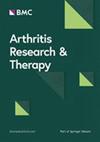The diagnostic value and clinical relevance of salivary gland ultrasound in patients with highly suspected Sjögren’s Disease: a prospective monocentric study
IF 4.6
2区 医学
Q1 Medicine
引用次数: 0
Abstract
To evaluate the diagnostic accuracy of salivary gland ultrasound (SGUS) in patients with high suspicion of Sjögren’s Disease (SjD) and to determine its potential role in the diagnostic process. This study is a cross-sectional diagnostic trial based on a prospective cohort, including 171 patients with high suspicion of SjD. SGUS of the parotid glands (PG) and submandibular glands (SMG) was performed according to the OMERACT scoring system. The predictive value of SGUS for diagnostic outcomes and labial salivary gland biopsy (LSGB) results was analyzed. The correlation between SGUS grading and unstimulated salivary flow rates (USFR) was also assessed using statistical tests. Of the 171 participants, 130 were diagnosed with SjD. The OMERACT total score demonstrated moderate efficacy in diagnosing SjD, with an area under the curve (AUC) of 0.78, a sensitivity of 0.52, and a specificity of 0.93. In comparison, LSGB showed the highest diagnostic efficacy (AUC = 0.90), followed by anti-Ro/SSA antibodies (AUC = 0.79). Combining the OMERACT total score with either anti-SSA antibodies or LSGB significantly improved diagnostic performance, achieving a specificity of 1.00. The diagnostic accuracy of parotid gland (PG) and submandibular gland (SMG) ultrasound grading was comparable. However, SMG grading exhibited higher sensitivity but lower specificity than PG grading. Additionally, SGUS grade 3 strongly predicted positive biopsy results (AUC = 0.77) and showed a significant correlation with USFR, with Spearman correlation coefficients of -0.45 for PG and -0.51 for SMG. Although the discriminatory efficacy of SGUS in patients highly suspected of SjD is suboptimal, SGUS may offer significant benefits for a specific subgroup of these patients. Grade 3 ultrasound findings are strongly associated with positive biopsy results and USFR, indicating a potential role in diagnosis and disease evaluation. SGUS may be considered for inclusion in future SjD classification criteria.涎腺超声在高度怀疑Sjögren病患者中的诊断价值和临床意义:一项前瞻性单中心研究
评价唾液腺超声(SGUS)对Sjögren病(SjD)高怀疑患者的诊断准确性,探讨其在诊断过程中的潜在作用。本研究是一项基于前瞻性队列的横断面诊断试验,包括171例高度怀疑SjD的患者。根据OMERACT评分系统对腮腺(PG)和下颌下腺(SMG)进行SGUS。分析SGUS对诊断结果和唇唾液腺活检(LSGB)结果的预测价值。SGUS分级与非刺激唾液流率(USFR)之间的相关性也通过统计检验进行了评估。在171名参与者中,有130人被诊断患有SjD。OMERACT总分对SjD的诊断效果中等,曲线下面积(AUC)为0.78,敏感性为0.52,特异性为0.93。相比之下,LSGB的诊断效能最高(AUC = 0.90),其次是抗ro /SSA抗体(AUC = 0.79)。将OMERACT总分与抗ssa抗体或LSGB结合使用可显著提高诊断效能,特异性达到1.00。腮腺(PG)和下颌骨腺(SMG)超声分级的诊断准确性相当。SMG分级的敏感性高于PG分级,但特异性较低。此外,SGUS 3级强烈预测活检阳性结果(AUC = 0.77),并显示与USFR显著相关,PG的Spearman相关系数为-0.45,SMG的Spearman相关系数为-0.51。尽管在高度怀疑SjD的患者中,SGUS的歧视性疗效并不理想,但SGUS可能为这些患者的特定亚组提供显著的益处。3级超声结果与活检阳性结果和USFR密切相关,表明其在诊断和疾病评估中的潜在作用。SGUS可能会被考虑纳入未来的SjD分类标准。
本文章由计算机程序翻译,如有差异,请以英文原文为准。
求助全文
约1分钟内获得全文
求助全文
来源期刊

Arthritis Research & Therapy
RHEUMATOLOGY-
CiteScore
8.60
自引率
2.00%
发文量
261
审稿时长
14 weeks
期刊介绍:
Established in 1999, Arthritis Research and Therapy is an international, open access, peer-reviewed journal, publishing original articles in the area of musculoskeletal research and therapy as well as, reviews, commentaries and reports. A major focus of the journal is on the immunologic processes leading to inflammation, damage and repair as they relate to autoimmune rheumatic and musculoskeletal conditions, and which inform the translation of this knowledge into advances in clinical care. Original basic, translational and clinical research is considered for publication along with results of early and late phase therapeutic trials, especially as they pertain to the underpinning science that informs clinical observations in interventional studies.
 求助内容:
求助内容: 应助结果提醒方式:
应助结果提醒方式:


